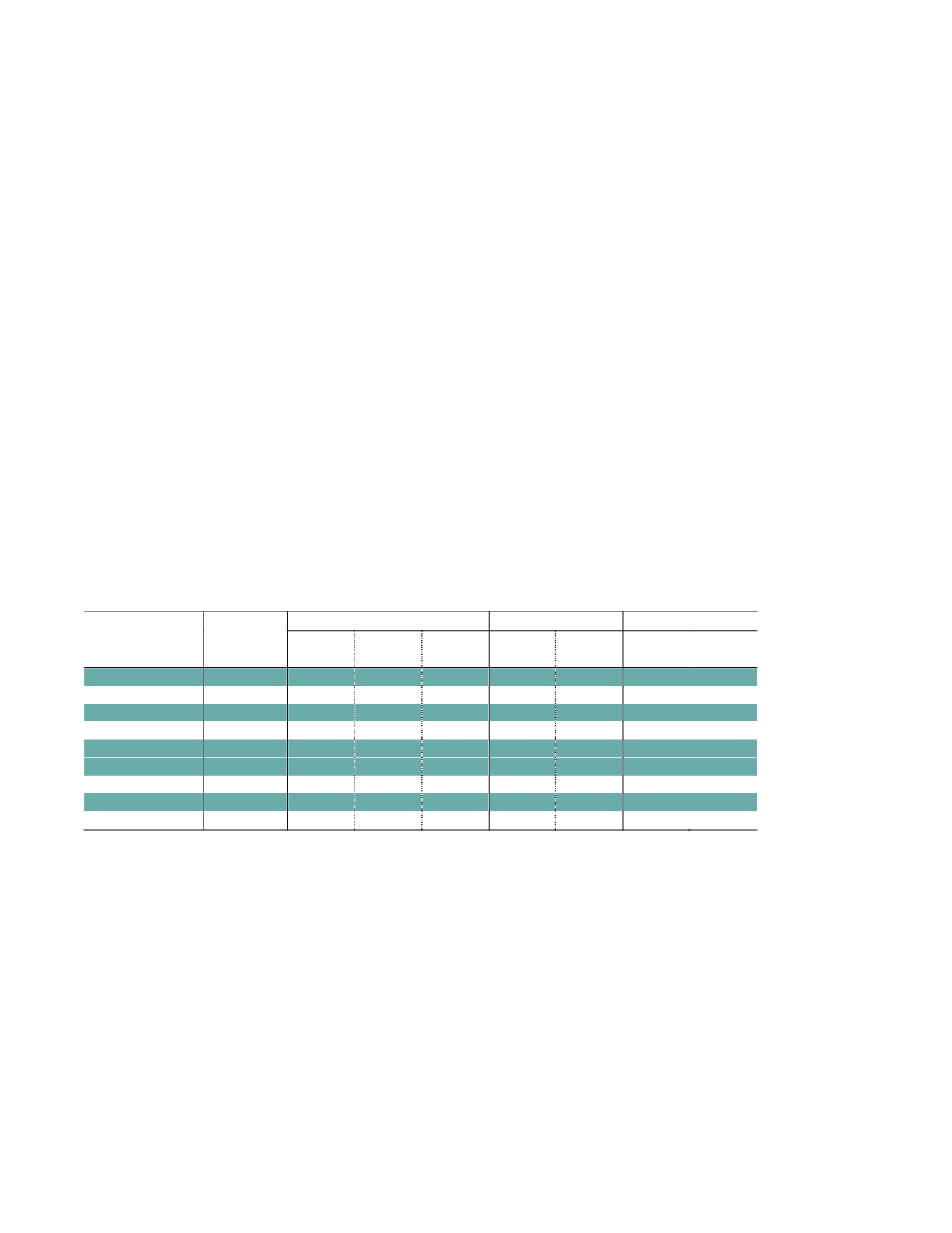
JANUARY | FEBRUARY 2016
Almond Facts
43
ALMOND: FUNGICIDE EFFICACY,
CONTINUED
ALMOND: TREATMENT TIMING
2
Strains of the brown rot fungi
Monilinia laxa
and
M. fructicola
resistant to Topsin-M and T-Methyl have been found in some California
almond orchards. MBC-resistant strains of the jacket rot fungus,
Botrytis cinerea
and powdery mildew fungi, have been reported in
California on crops
,
other than almond and stone fruits and may have the potential to develop in almonds with overuse of fungicides with similar chemistry.
MBC-resistant strains of the scab fungus,
Cladosporium carpophilum
, have been found in California.
3
Field resistance of
Alternaria
sp. and
Cladosporium carpophilum
to QoI and SDHI fungicides has been detected in almond orchards. AP-
resistant populations of
Monilinia
spp. have been found on other stone fruit crops in California.
4
Of the materials listed, only sulfur, Abound, Gem, and some of the DMI fungicides (FRAC Group No. 3) are registered for use in late spring and
early summer when treatment is recommended.
5
PM-like refers to a powdery mildew-like disease on almond fruit that is managed with fungicides. Recent information suggests an
Acremonium
species is involved.
6
Excellent control obtained when combinations of Topsin-M or T-Methyl and Captan are used.
7
To reduce the risk of resistance development start treatments with a fungicide with a multi-site mode of action; rotate or mix fungicides
with different mode of action FRAC numbers for subsequent applications, use labeled rates (preferably the upper range), and limit the total
number of applications/season.
8
Oils recommended include "light" summer oil, 1-2% volume/volume.
9
Not registered for use later than 5 weeks after petal fall.
10
Efficacy reduced at high temperatures and relative humidity; experimental for Alternaria.
11
Bravo Ultrex, Bravo WeatherStik, Echo Ultimate, and Chlorothalonil are currently registered.
12
Do not use in combination with or shortly before or after oil treatment.
13
Efficacy is better in concentrate (80-100 gal/acre) than in dilute sprays.
14
The low rates necessary to avoid phytotoxicity in spring reduce the efficacy of copper.
15
"Burns out" scab twig lesions when applied at delayed dormant. (Chlorothalonil can be applied with dormant oil during tree dormancy).
16
Hull rot ratings are for the disease caused by
Rhizopus stolonifer
. Ratings for the disease caused by
Monilinia
spp. will be provided in the
future.
17
Active ingredient,
Trichoderma harzianum
Rifai strain KRL-AG2, provides control of Silver leaf disease.
Note: Not all indicated timings may be necessary for disease control.
Disease
Dormant
Bloom
Spring
1
Summer
Pink
bud
Full
bloom
Petal
fall
2
weeks
5
weeks
May
June
Alternaria
----
----
----
----
----
++
+++
+++
Anthracnose
2
----
++
+++
+++
+++
+++
+++
++
Brown rot
----
++
+++
+
----
----
----
----
Green fruit rot
----
----
+++
----
----
----
----
----
Hull rot
7
—
—
—
—
—
—
—
+++
Leaf blight
----
----
+++
++
+
----
----
----
Scab
3
++
---
---
++
+++
+++
+
---
Shot hole
4
+
5
+
++
+++
+++
++
----
----
Rust
----
----
----
----
----
+++
+++
+
6
Rating:
+++ = most effective, ++ = moderately effective, + = least effective, and ---- = ineffective
1
Two and five weeks after petal fall are general timings to represent early postbloom and the latest time that most fungicides
can be applied. The exact timing is not critical but depends on the occurrence of rainfall.
2
If anthracnose was damaging in previous years and temperatures are moderate (63°F or higher) during bloom, make the first
application at pink bud. Otherwise treatment can begin at or shortly after petal fall. In all cases, application should be
repeated at 7- to 10-day intervals when rains occur during periods of moderate temperatures. Treatment should, if possible,
precede any late spring and early summer rains. Rotate fungicides, using different fungicide classes, as a resistance
management strategy.
3
Early treatments (during bloom) have minimal effect on scab; the 5-week treatment usually is most effective. Treatments
after 5 weeks are useful in northern areas where late spring and early summer rains occur. Dormant treatment with liquid
lime sulfur improves efficacy of spring control programs.
4
If pathogen spores were found during fall leaf monitoring, apply a shot hole fungicide during bloom, preferably at petal fall
or when young leaves first appear. Re-apply when spores are found on new leaves or if heavy, persistent spring rains occur.
If pathogen spores were not present the previous fall, shot hole control may be delayed until spores are seen on new leaves
in spring.
5
Dormant copper treatment seldom reduces shot hole infection but may be useful in severely affected orchards and must be
followed by a good spring program.
6
Treatment in June is important only if late spring and early summer rains occur.
7
Make application at 1-5% hull split to manage hull rot caused by
Rhizopus stolonifer
.


